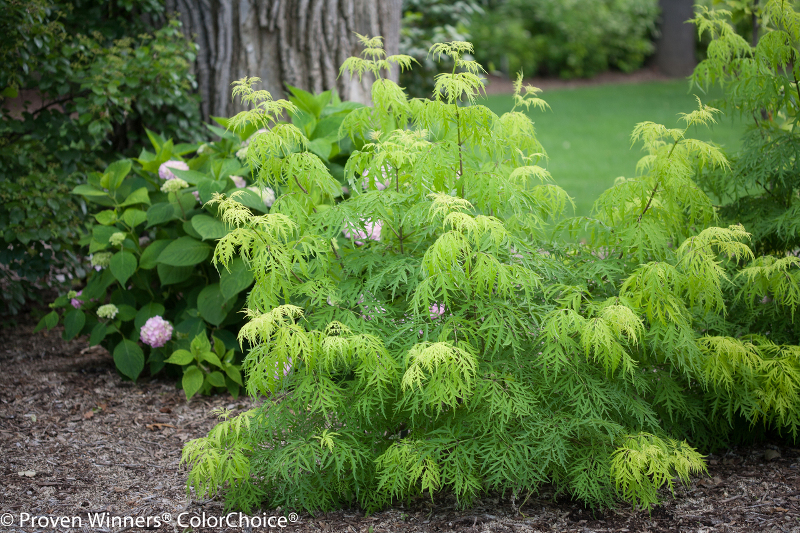Should you prune elderberry shrubs? Whether you’re looking for more prolific growth and fruiting or you’re genuinely curious if pruning will benefit your elderberry, this article is for you! Yes, you should prune elderberry shrubs, but with caution!
In the case of damaged or older limbs, pruning is beneficial by encouraging new growth in the upcoming growing season. Take care to only prune when the elderberry is dormant in the winter months. A clear marker that your elderberry is ready to prune is when all leaves have fallen and your local climate has experienced below freezing conditions. Look for limbs that may have fallen prey to local animals looking for a snack. Remove these damaged limbs by cutting at the base of the trunk.
Limbs that look to be older than three years will be past their production peak. Identify the older limbs by looking for age scars along the bark and comparing the thickness of the limbs within the bush. Remove these older limbs by cutting at the base of the trunk, leaving a small nub.
Take special care to leave at least eight healthy limbs with a mix of new growth and two year old growth. Also use sanitized pruners to prevent spread of any diseases from previous pruning. Following these instructions, you may find your elderberry flourishing and producing well in the new growing season!

When to Prune Elderberry
Elderberry plants should always be pruned in the winter while dormant. If there is damage during the growing season and waiting cannot be avoided, only prune what is absolutely necessary. The foliage on elderberry plants all lend a hand in producing and procuring the needed nutrients for the growing bush. If you can wait until winter to prune, wait for the leaves to fall from the bush and freezing conditions in your area. Then you may identify limbs that need to be removed and prune them at the base of the trunk.
One pruning a year is sufficient and will provide the best results. You may find yourself examining your elderberry bush and seeing healthy, younger growth. In this case, your annual pruning may be able to skip a year. Use your discretion based on observation of damage and older limbs. Once leaf buds begin to pop out of the stems, do not prune unless absolutely necessary.
Excessive pruning, especially in non-dormancy, can backfire your goal of bountiful blooming and fruiting. Pruning may be necessary if you’re approaching early summer (late June, early July) and you’re not seeing any sign of flower buds appearing. To identify if your elderberry is preparing to bloom, look for clusters of short stems on the end of your main limbs.
If there are none, your elderberry may benefit from pinching/pruning the top of these limbs. This may encourage new growth, produce flowers and then fruit. Elderberry plants thrive when left with a majority of the new growth and two year growth. Ensure that any pruning that takes place is done with the discretion of leaving plenty of healthy limbs, at least eight main limbs.
Why Prune Elderberry
Elderberry plants are native to North America and can be found in wild and domestic landscapes alike. With this in mind, wild elderberry plants don’t typically receive much pruning. Yet, you may see clusters of these dark-purplish, black fruit along the roadsides or in mountainous regions. Pruning is not absolutely necessary, however it does encourage new and healthy growth that may lead to more bountiful harvests.
If you observe limbs older than three years old, the elderberry will benefit from the removal of these limbs. Damaged limbs also inhibit necessary nutrient transfer to the rest of the plant. Removing damaged limbs will benefit future growth. Pruning may also be necessary if flowering does not appear to be happening in early summer.
How to Prune Elderberry
Step 1 - Identify older or damaged limbs.
Look for scars along the limbs from weather, animal damage or from old growth.
Step 2 - Prune the damaged or older limbs.
Go to the base of the limb at the trunk and prune by leaving a small nub.
Step 3 - Identify signs of flower budding during early summer.
Examine the crowns of each limb for clusters of small stems or lack thereof. If none are visible and it is late June or early July, your elderberry may benefit from pruning/pinching the top of the limbs to encourage new growth.
Elderberry Pruning Tips
- Wait until your elderberry has gone dormant to prune if possible.
- Use discretion of what limbs should be pruned by observing for damage and old growth.
- Pinch/prune the tops of the limbs if no sign of flower budding is evident in late June or early July.
 |
Author Chris Link - Published 01-15-2022 |
